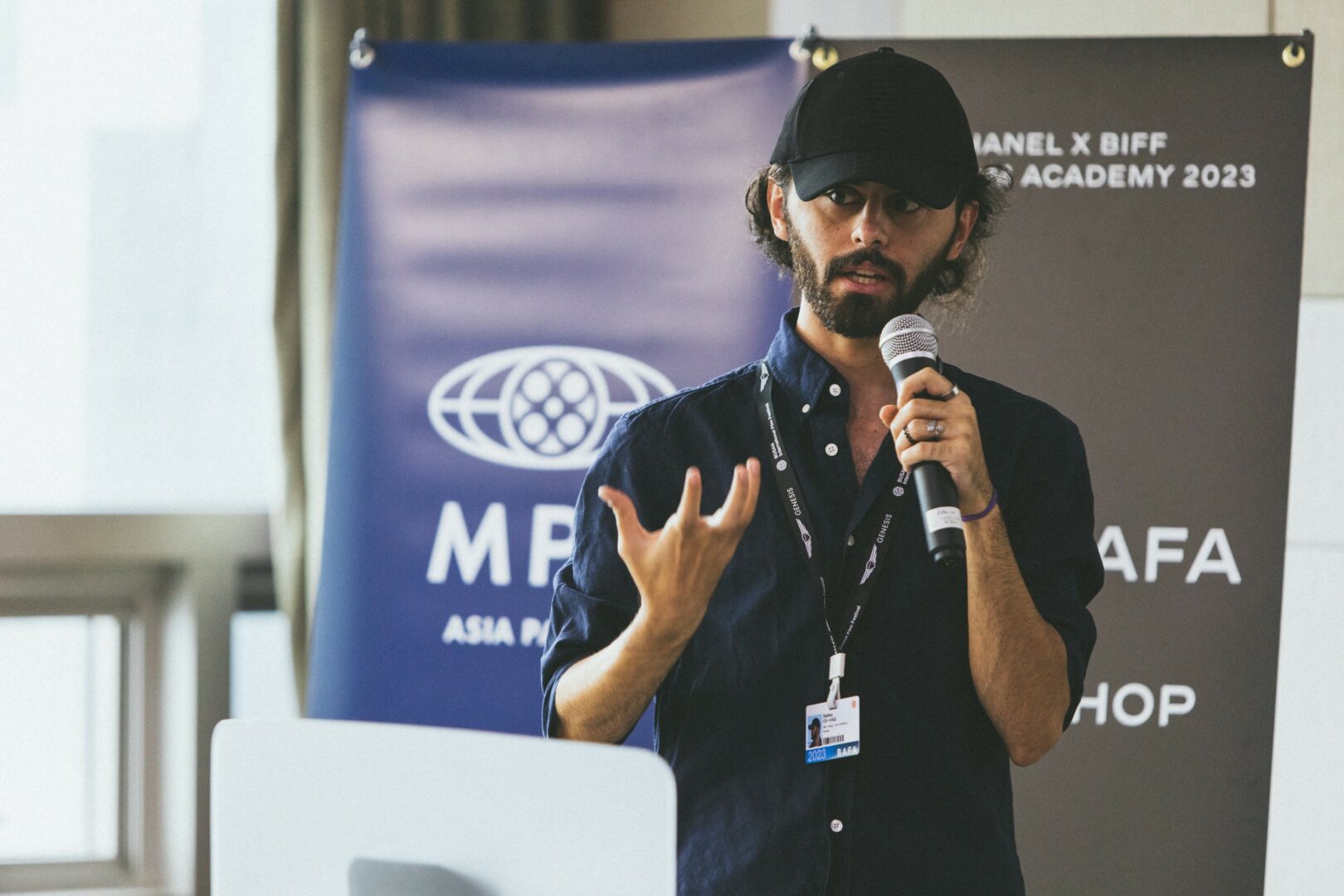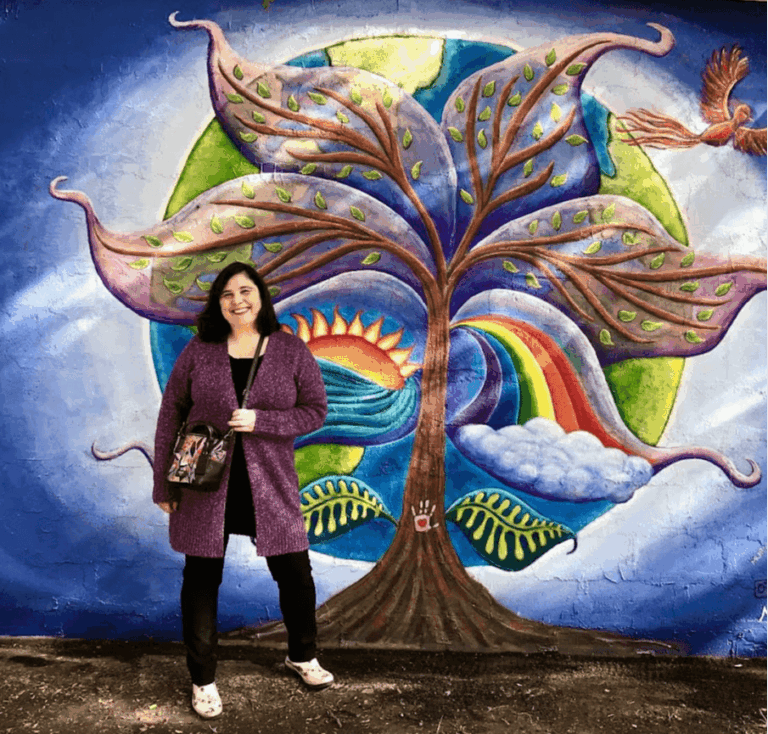We recently connected with Mike Blum and have shared our conversation below.
Mike, appreciate you making time for us and sharing your wisdom with the community. So many of us go through similar pain points throughout our journeys and so hearing about how others overcame obstacles can be helpful. One of those struggles is keeping creativity alive despite all the stresses, challenges and problems we might be dealing with. How do you keep your creativity alive?
I have a simple answer to this question but I’m going to give you a little back story first so that this makes sense and has context.
The advice I’m about to give is not mine. It originated for me with Barry Cook, the director of movies like Disney’s “Mulan.” I met Barry decades ago when we both worked at Disney Feature Animation. Barry, of course, was a big-time director. At that time, I was working in the technology group at the studio. My undergraduate degree was in Computer and Electrical Engineering and I had a Masters degree in Computer Science. I started out working for Disney as a coder and worked my way up to lead small engineering teams, then much larger ones, and eventually I transitioned over to a production role as one of four main supervisors on one of our features.
But while I was working my way up the corporate ladder, I realized I had another dream. It sounds like a cliche, but I realized I wanted to direct. The epiphany happened when, early in my career, I pitched an idea to the technology department. My idea was that to understand production’s needs, we should create our own CG short film using the same techniques and tools the company used to make their features. This training project was approved under the condition that we not interfere with resources needed to complete our features and only work on it in our free time – essentially, after hours.
While I knew I would probably need to produce the short, I tried getting others to write and direct. But when no one else stepped up to the plate, I realized it was either going to be me directing or the project wasn’t going to happen. And within two weeks of starting, I had my epiphany. Programming was fun but having a vision for a film and bringing it to life was intoxicating.
The problem is that animating films in CG takes a lot of work, even more so 25 years ago, and especially when you didn’t know the tools, never had a single filmmaking class, had to work after hours, and constantly had to keep a team of others motivated. In fact, that first short took us over 3 years to make! All for 2 minutes of animation!
Within months, many of our core team gave up. They had lives and didn’t want to spend endless hours on a side project. Who could blame them? Meanwhile, I and a few others persisted. But I’m not going to lie, it was tough working a full day on my real job and then putting in an extra 3-4 hours 4-5 days a week… for years on end.
Meanwhile, part of my learning process was taking advantage of the access I had to so many wonderful people who worked in the same building as me but whom I wouldn’t normally encounter. I spoke to animators, art directors, producers, directors, and others. I wanted to know what they did, how they did it, and what advice they had. It was in one of these informal meetings that I struck up, not exactly a friendship, but an acquaintanceship with Barry who about 6 years prior had also managed to convince the executives at the company to support what was essentially a personal project. I was a couple of years into the project and was having a hard time maintaining momentum and couldn’t really see the light at the end of the tunnel. “How,” I asked, “do you get personal projects done?” And he gave me the best single piece of advice I’ve ever gotten and I’m passing it along to all of you.
Barry told me to make sure I worked on my project EVERY SINGLE DAY. That doesn’t mean making huge progress every day but he said to do something to push your personal project forward. If you aren’t feeling particularly creative, write an email to someone who might be able to help, do some research, learn a new aspect of a tool you need, or tweak a shot. It doesn’t matter what you do so much as the act of doing something. Because if you let one day slip, the next time you are feeling down, you’ll let two days slip, then a week, then a month, then a year. Pretty soon you will just look back and ask “What if?”
That advice has the combined benefits of being both hard-core and kind. You need discipline but it’s the kind of discipline that’s achievable and doesn’t look for perfection. And it’s the advice that not only allowed me to finish that first film but two more after. In total, I took 10 years (!) to create a body of work that was good enough to launch my 2nd career. 10 years to get my first agent. 10 years to get offered a paying job as a director.
But in those 10 years, I was continually improving my craft, learning, and keeping the creative flames stoked.
And even today, running my own, small animation studio, I continue to live by Barry’s words. Sure, our work-for-hire jobs for clients keep the lights on, but I still live to create. And I still push our development projects and original productions forward every single day. You need patience, but it’s amazing what you can achieve when you push the rock up the hill day after day after day after day…


Thanks for sharing that. So, before we get any further into our conversation, can you tell our readers a bit about yourself and what you’re working on?
As I mentioned earlier, I started my career at Disney Feature Animation and it took me nearly 12 years to work up the courage to leave. And I only did that when I was offered a chance to direct a series for Comedy Central called “The Adventures of Baxter & McGuire”, or as I call it “the greatest buddy comedy about a pair of talking testicles of all time.” Now when I left, people, except my then-girlfriend and now-wife, thought I was crazy. Leave the number #1 animation company in the world at the peak of my career for a web series about testicles? Why? But I had worked hard, saved enough money to give me a runway, and knew I needed to jump at opportunities that presented themselves. Maybe I wouldn’t get another shot for 10 more years! So, I left, worked really hard on that series and it turned out great. So great that Comedy Central aired them all on TV, I was nominated for an Emmy Award, and episodes played in competition at Sundance, Annecy, and dozens of festivals around the world.
I thought I was set. I had a pretty big agent, I had buzz, was getting general meetings everywhere around town… and you know what, I got nothing off that success. I pivoted, spent a couple of years producing an independent feature, and eventually realized that if I was going to make it in this town, I needed to listen to what executives wanted me to do – make short, funny animated content. So, I pivoted again and started developing short-form series and animated TV shows. Within 6 months I had sold my first series called “Samurai! Daycare” to a company called Defy Media for an animated offshoot of the popular SMOSH YouTube Channel.
Since I traveled quite a bit in those days as an “animation expert” I knew tons of great studios around the world and I assumed I would just outsource production to one of them. But when the bids came in, they weren’t that great. So I made the strategic decision to buy a bunch of machines, software, and furniture and set up a little shop in our finished garage. That turned out to be a good decision because we finished the series on time and budget to much acclaim and I now had reusable resources. I soon sold a couple of other series to DreamWorksTV called “Fifi: Cat Therapist” and “Get My Goat” and was able to complete them similarly. And then folks started calling me to do work for their projects. I never said no if I could figure out a way to do it without losing money. And pretty soon, we were doing commercials, branded content, VFX, documentaries, and TV shows. We helped animate on “Bojack Horseman”, “Cyanide & Happiness”, commercials for American Airlines, The Lincoln Project, and Wise Potato Chips but also animated logos for mom-and-pop stores, or took gigs to create launch videos for new products. If I could figure out how to make money and I thought it would help our reel, I took the work.
Cut to some number of years later, I woke up and realized “I guess I own an animation studio?” It was never the plan, but there it is. And while some weeks or months go by where we have more production work than others, I never forgot that I left Disney to be creative every day and so the long-term focus of the studio is still to develop and create original content. We’ve had development deals at Cartoon Network, Lion Forge Animation, and Disney. We have distribution deals on a couple of other series. We’ve developed and produced an original series called “Super Slackers” with David Silverman (The Simpsons). We’ve sold and animated original shorts to Sesame Street. And most recently, we’ve created our first original YouTube series called “Barkster Kid Songs.” It’s a song-based, social/emotional learning, animated preschool show, and in less than a year we’ve created more than an hour’s worth of original content, have amassed thousands of subscribers and are well on our way to creating a brand from the ground up. It’s an exciting time. If you have little ones, check it out!
https://www.youtube.com/@BarksterKidSongs


If you had to pick three qualities that are most important to develop, which three would you say matter most?
For starters, I’m a bulldog. Once I decide to do something, nothing can stop me. That can sometimes mean I don’t abandon things when I should, but generally, my tenacity has let me punch above my weight my entire life.
Second, I’m confident but not cocky. I have a very good sense of what I’m good at and what I’m not and I either work to make myself better in areas where I am deficient or seek counsel/help from people who are experts in their fields. The combination of traits lets me make both tactical and strategic good decisions more often than not.
Third, I’m a linear and logical thinker. For me, learning how to program directly relates to how I break stories, finish projects, and run my company. I can break complex problems down into concrete chunks and work through them one at a time.
In terms of advice, I think the TV and film industry is very open to letting people in the fold who come from a variety of different backgrounds. It’s true that I’ve never met anyone with my background who has made a career in animation but ultimately, to the extent that I’ve “succeeded,” it’s because people liked the end product that I made. The fact that I didn’t have a particular skill set or background didn’t matter. While the downside of that is that there is no single career path, it does mean that you can forge your own path. Just make good stuff. My go-to examples are Clint Eastwood and David Fincher. Each are considered masters of their craft and each have diametrically different working styles. Eastwood rarely speaks to his actors and is known to shoot 1 or 2 takes maximum. Fincher is known to shoot certain camera setups over 100 times and be very harsh and demanding of his actors. Is one way better than the other or “right”? No! So, be you and make good stuff.


All the wisdom you’ve shared today is sincerely appreciated. Before we go, can you tell us about the main challenge you are currently facing?
The industry as a whole is in decline. Fewer shows and movies are being made and the appetite for original content is as low as I’ve ever seen it. So, how can we compete in this era to get our original content made?
We are approaching the problem not with our eyes closed but rather, wide open. Since we know original content is a tough sell, we’re developing properties that have a fighting chance of overcoming that stigma. That means, for instance, developing shows that organically have consumer products built into their DNA. It doesn’t mean just designing cute characters and telling executives you can put those characters on t-shirts or lunchboxes. It means, for instance, that the actual stories revolve around known play patterns kids engage in so that buying toys will be a natural fit for those patterns.
We are also developing shows based on properties that are in the public domain. By finding fresh twists on properties everyone in the world already knows, we are allowing ourselves to leapfrog over other wonderful projects that don’t have an already established, built in audience.
And finally, we are taking power away from the gatekeepers by launching our own brands on YouTube and betting on ourselves that we can create IP that people want to see and that we can monetize without the help of others. We have done this both by rethinking our production process and our business model. The first of these series is Barkster Kid Songs. So far, we have far outpaced our growth projections and we remain very hopeful that we can continue to expand our reach in the coming year. If you have little kids, check it out:
https://www.youtube.com/@BarksterKidSongs
Contact Info:
- Website: https://www.pipsqueakanimation.com/
- Instagram: https://www.instagram.com/pipsqueakanim/
- Facebook: https://www.facebook.com/PipsqueakAnimation
- Linkedin: https://www.linkedin.com/company/pipsqueakanim
- Twitter: https://x.com/pipsqueakanim
- Youtube: https://www.youtube.com/@pipsqueakanimation
- Other: https://www.youtube.com/@BarksterKidSongs


so if you or someone you know deserves recognition please let us know here.




